“We live in a very special time, a rare time. A time when the confluence of force fields is giving designers access to tools we’ve never had access to before,” Oxman declared in her 2015 TED Talk. “These fields are computational design, allowing us to design complex forms with simple codes; additive manufacturing, letting us produce parts by adding material rather than carving it out; materials engineering, which lets us design behavior of materials in high resolution; and synthetic biology, enabling us to design new biological functionality by editing DNA. And at the intersection of these four fields, my team and I create.”
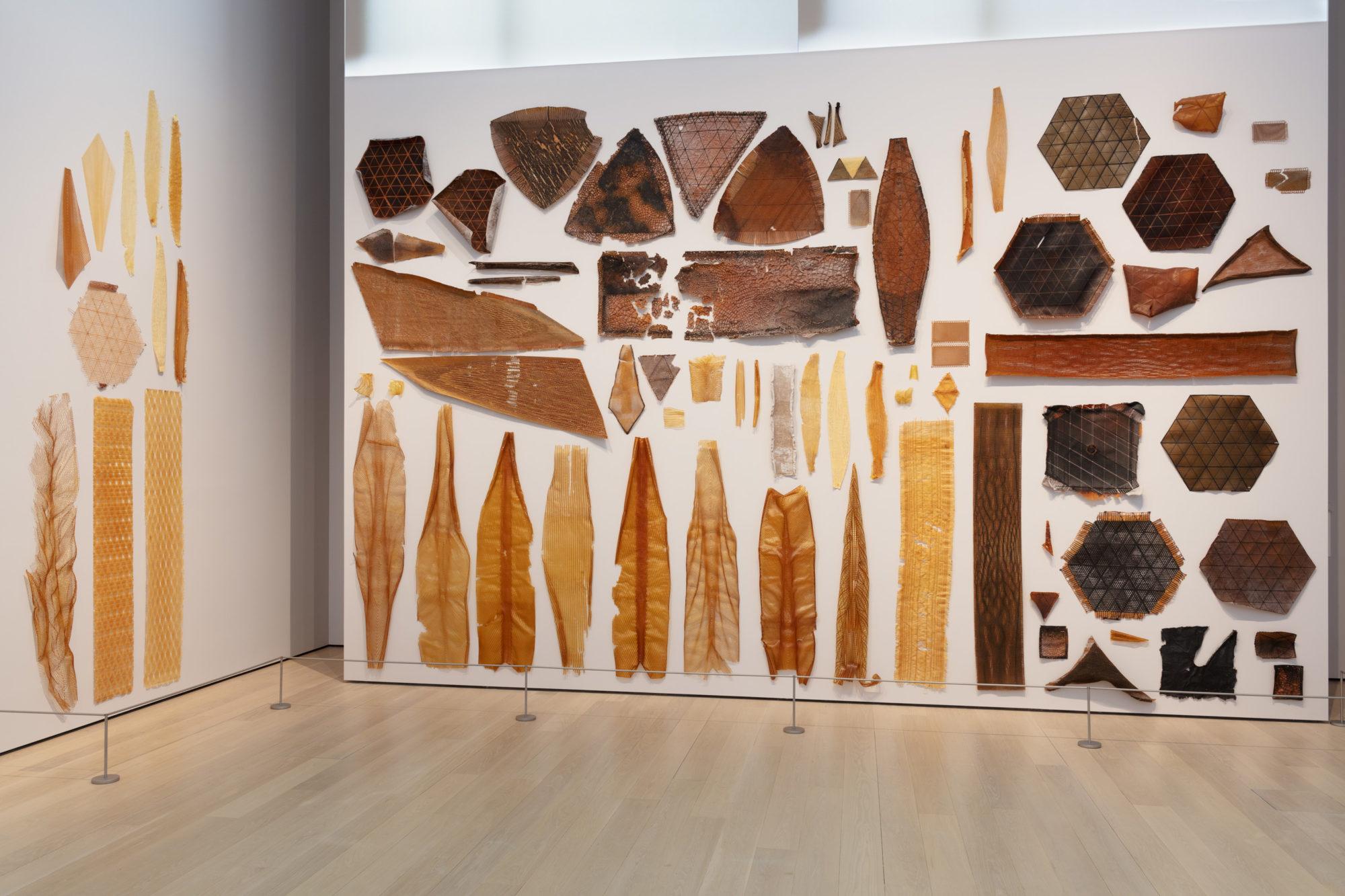
Installation view of Neri Oxman: Material Ecology, The Museum of Modern Art, New York.
At the forefront of a new philosophy of designing and inventing the world around us, architect and designer Neri Oxman mixes the worlds of art and design with the realms of science and engineering. Her engaging collaborative work, which concocts pilot projects that provide the opportunity to create new technologies, is the subject of a survey at New York’s Museum of Modern Art. A professor of media arts and sciences at the MIT Media Lab, where she founded and directs the Mediated Matter research group, Oxman is fascinated with the fusion of biology and technology. Her muse is nature, but her medium is the 3-D printer.
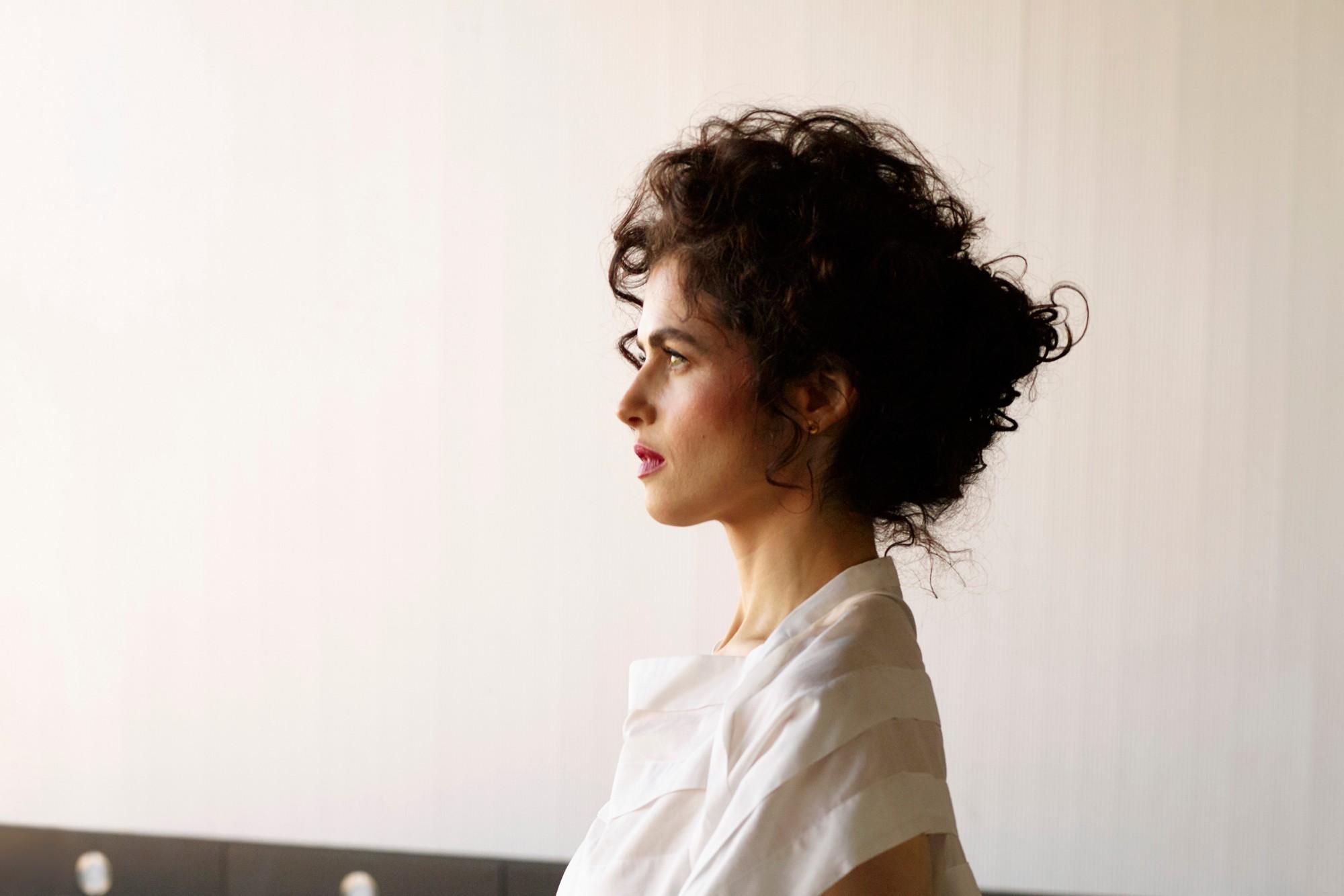
Neri Oxman, 2017.
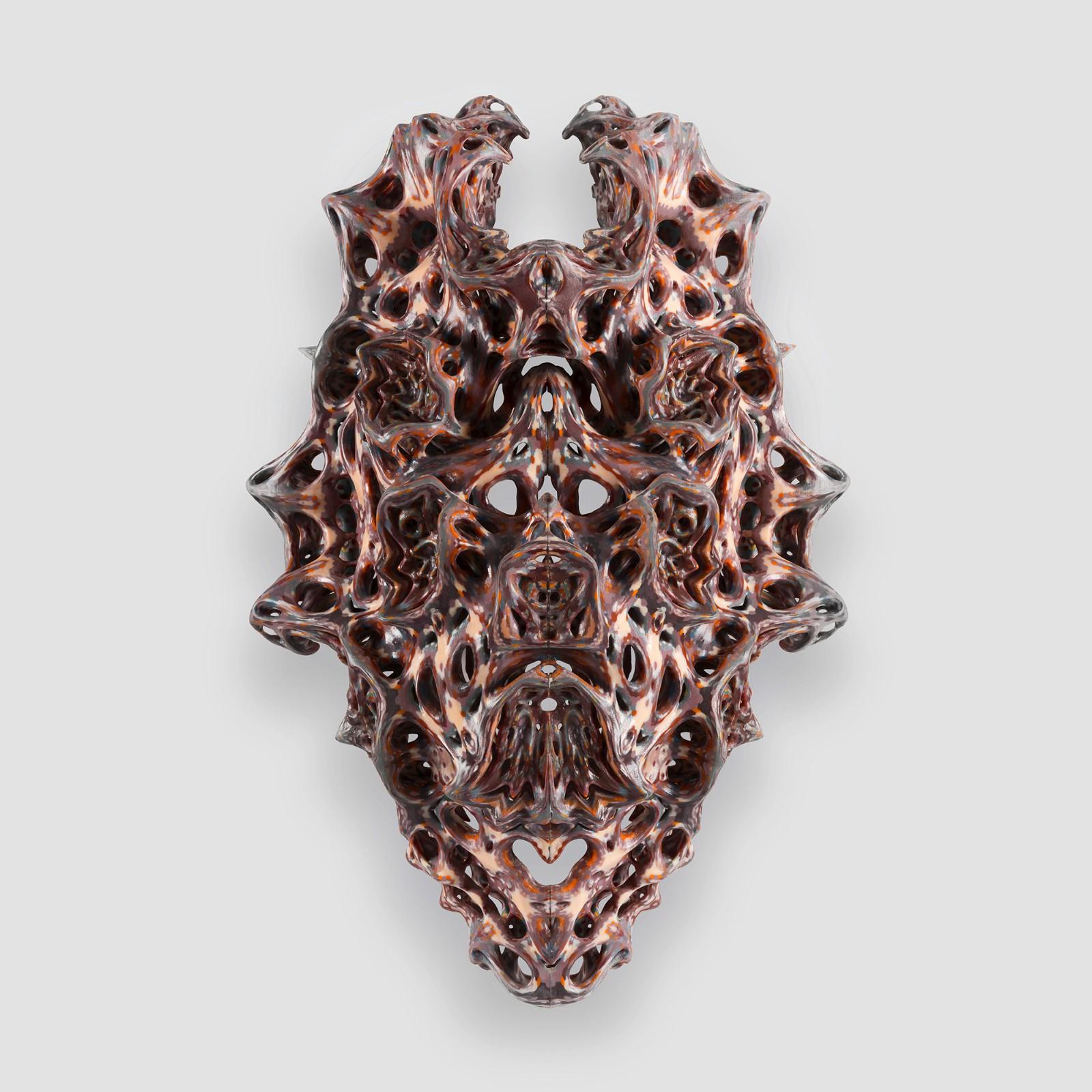
Neri Oxman and The Mediated Matter Group, Vespers, Series 1, Mask 5, front view, 2018. Designed for The New Ancient Collection. Curated and 3-D printed by Stratasys.
Born in Haifa, Israel in 1976 to parents who were architects, Oxman went to medical school after completing her mandatory military duty, but then switched to studying architecture and design. Graduating from the London Architecture Association School of Architecture in 2004, she moved to Boston to pursue her PhD with a thesis investigating material-aware design at the Massachusetts Institute of Technology (MIT) in 2005. The following year she launched an interdisciplinary research program to experiment with generative design at MIT called Material Ecology. She became an associate professor at the MIT Media Lab in 2010, the same year she founded Mediated Matter, which is focused on digital fabrication technologies that are inspired by nature.
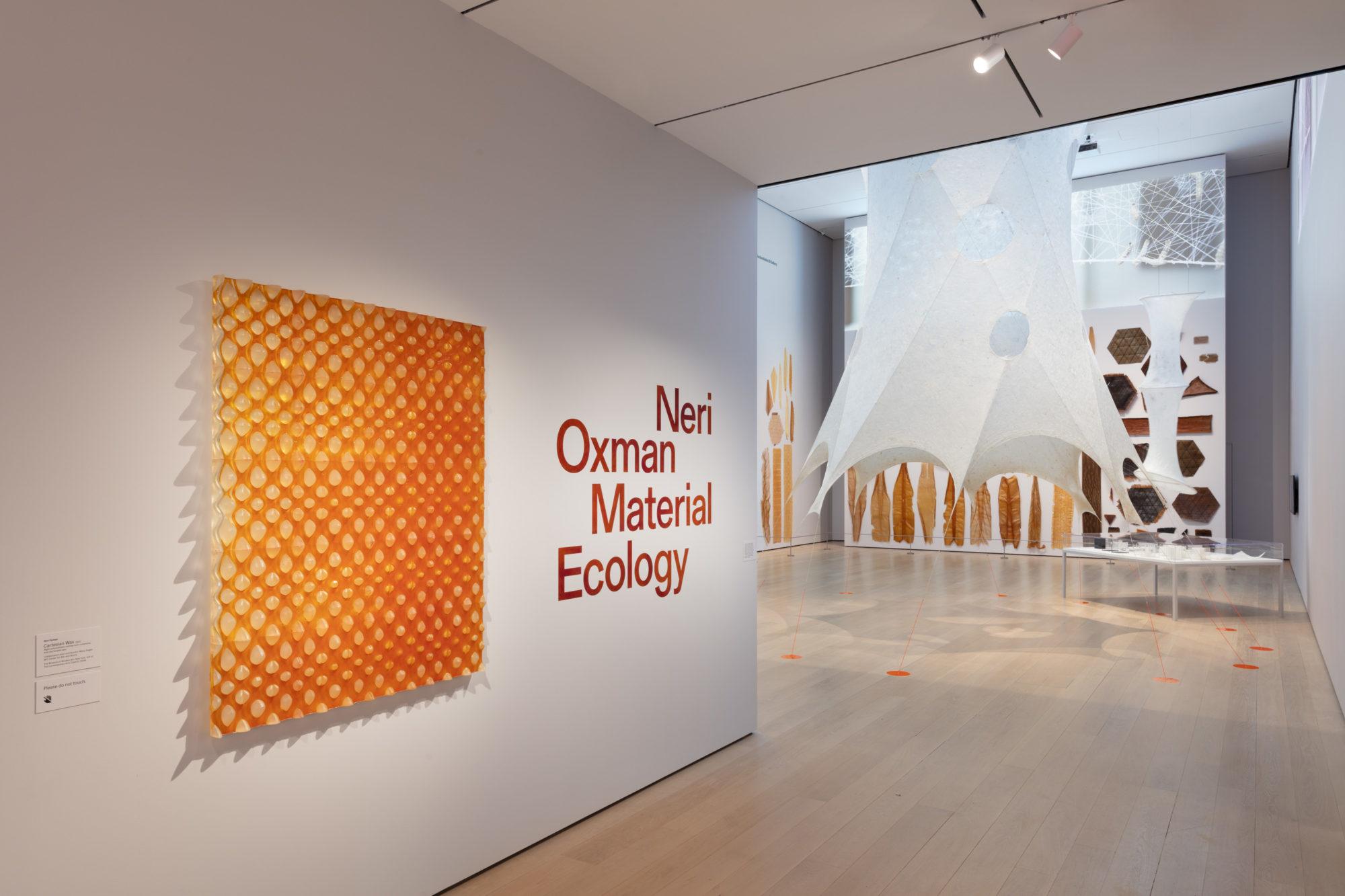
Installation view of Neri Oxman: Material Ecology, The Museum of Modern Art, New York.
Winner of nearly fifty awards—including SFMOMA’s 2019 Contemporary Vision Award, the 2014 Vilcek Prize in Design, and Fast Company 100 Most Creative People in 2009—Oxman has collaborated with Dutch fashion designer Iris van Herpen on digitally printed wearables, Icelandic singer Björk on 3-D printed masks based on scans of the performer’s face, and American-Israeli printing technology company Stratasys to produce a sound-absorbing chaise lounge that simulates the silence of the womb. And, in the course of their research, she and her team developed the first 3-D glass printing process, which offers a variety of uses in future building projects.
One of the designer’s door-opening opportunities came when Mexican architect Enrique Norten introduced her work to MoMA architecture and design curator Paola Antonelli when Oxman was still a student at MIT. In the process of researching new design work to present in the exhibition Design and the Elastic Mind, which explored the intersection between science and design, Antonelli tapped Oxman for her celebrated 2008 group show and began a dialogue with the gifted creator that has continued through to the exhibition on view at the museum today.
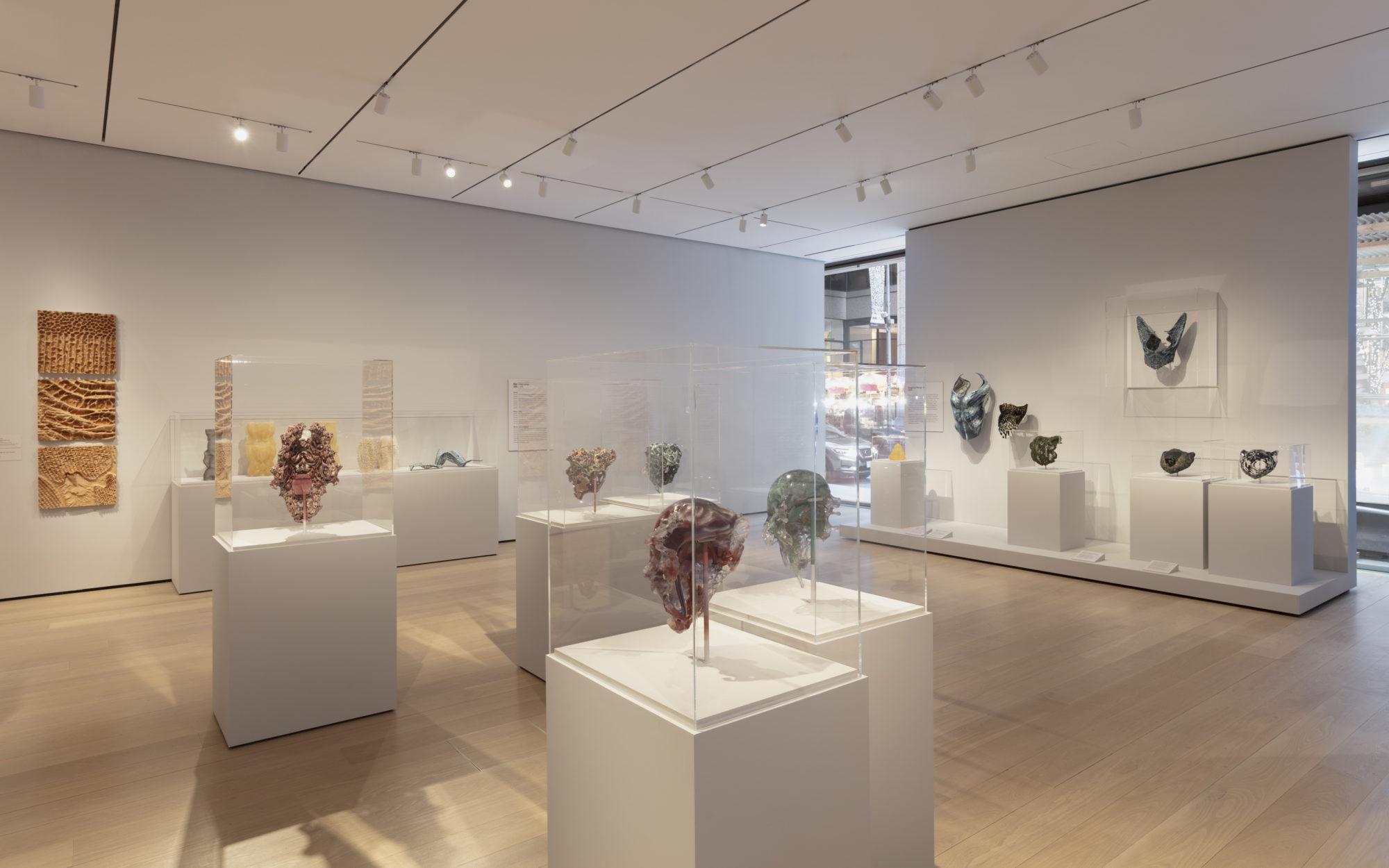
Installation view of Neri Oxman: Material Ecology, The Museum of Modern Art, New York.
The current MoMA exhibition, Neri Oxman: Material Ecology, features several major projects that the designer has created over the course of her twenty-year career. Presented as “demos” of materials and processes that could be used by future architects and designers, the projects highlight Oxman’s interdisciplinary and interspecies collaborations in the field of material ecology, a term she coined to describe her technological mashup of design, manufacturing, and biology.

Installation view of Neri Oxman: Material Ecology, The Museum of Modern Art, New York.
Standouts in the show include Silk Pavilion II (2019), a striking structure that was produced through a combination of digital (a computer-controlled robotic arm) and biological (seventeen thousand silkworms) fabrication; Aguahoja (2018-19), a biodegradable alternative to plastic constructed from chitin, which is found in such organisms as dragonfly wings and fungi tissue, and pectin, a fiber that occurs in various fruits; and Totems (2019), which employs melanin, a pigment that defines the color of skin, fur, hair, and eyes in millions of species, in architectural construction for possible UV protection and optical changes in a building’s façade.
Other incredible projects on view feature digitally printed helmets, masks, corsets, and body armor that reference fantastical beasts from folklore and literature while simulating skeletal, pulmonary, and muscular functions of the human body, along with dynamic glass objects and columns that were digitally printed at approximately 1,900 degrees Fahrenheit (1,140 degrees Celsius).
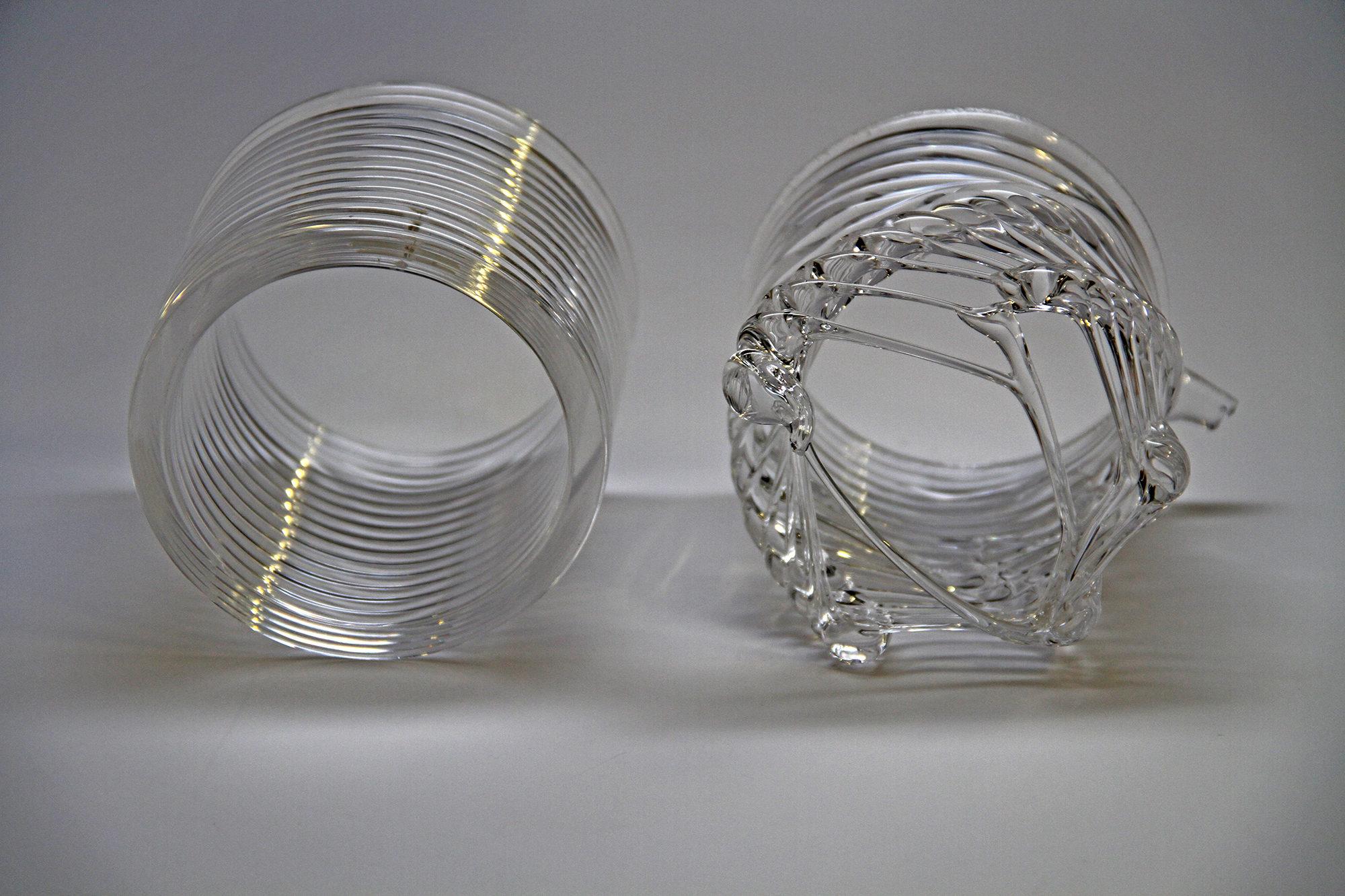
Neri Oxman and The Mediated Matter Group, Glass I, 2015.
Closing her now-famous TED Talk by discussing the process of making her first silk pavilion, Oxman stated, “So here we are, the two world views, one spins silk out of a robotic arm, the other [the silkworm] fills in the gaps. If the final frontier of design is to breathe life into the products and buildings around us—to form a true material ecology—then designers must unite these two world views, which brings us back, of course, to the beginning. Here’s to a new age of design, a new age of creation that takes us from a nature-inspired design to a design inspired nature, and that demands of us—for the first time—that we mother nature.”
























